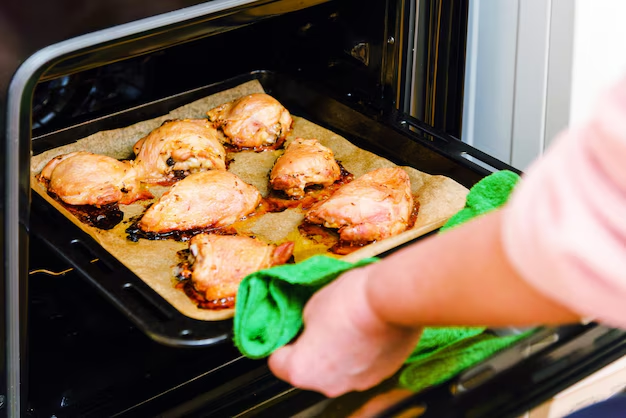How Safe Is It to Transfer Corningware from the Refrigerator to the Oven?
Have you ever found yourself pondering whether your trusty Corningware can seamlessly transition from the refrigerator to the oven? With meal prepping on the rise and time in the kitchen often limited, this is a common query for many home cooks. The good news is that with some insight and a few precautions, you can make the most of your Corningware without any mishaps. Let's delve into how you can safely make the refrigerator-to-oven transition.
Understanding Corningware: What Is It Made Of?
Before we dive into the mechanics of using Corningware, it's essential to understand what it is. Corningware is a brand known for its durable cookware that can withstand various temperatures. Most pieces, especially the classic ones, are made of a unique glass-ceramic material known as Pyroceram. This material is notable for its ability to tolerate temperature extremes, making it potentially suitable for moving from cold to hot environments.
✅ Key Point: Pyroceram's durability makes it practical for cooking tasks that involve temperature changes, a distinct advantage for busy kitchens.
Modern-day Corningware might also be made from stoneware or other materials, which may have different thermal properties compared to Pyroceram versions.
Why Temperature Matters: Thermal Shock Explained
The transition from a cold to a hot environment can sometimes risk thermal shock, a phenomenon where sudden temperature changes cause materials to crack or break. The risk of thermal shock is a crucial aspect to consider when moving any cookware from the refrigerator to the oven.
Tips to Reduce Thermal Shock:
- Allow your Corningware to sit out for a few minutes to gradually adjust to room temperature.
- Preheat your oven adequately before placing your dish in it.
Factors Affecting Thermal Shock
- Material Type: Pyroceram can typically endure swift temperature changes better than other materials like stoneware.
- Suddenness of Temperature Change: A very rapid change can increase the risk of cracking.
- Size of the Dish: Larger dishes tend to react more dramatically to quick shifts in temperature.
🔍 Note: If unsure about which type of Corningware you own, check the bottom of the dish for material information or visit the manufacturer's website for guidance.
Safe Practices for Moving Corningware Between Refrigerator and Oven
Here is how you can confidently make this move while ensuring the safety and longevity of your Corningware.
1. Familiarize Yourself with Your Corningware
Check the care instructions that come with your specific Corningware to understand its limitations. This will help gauge whether it can reliably withstand drastic temperature changes.
2. Use a Transition Step
Rather than rushing your dish from the fridge straight into a preheated oven, allow it to sit at room temperature briefly. This simple step can be an effective way to avoid thermal shock risks.
3. Utilize Proper Techniques
When you're ready to place your Corningware in the oven, ensure that:
- The oven is preheated and not in a phase of fluctuating temperature.
- The dish is not empty, as liquids or sauces can help distribute heat more evenly.
Considerations for Different Types of Corningware
Modern iterations of Corningware may include various materials such as stoneware and CorningVisions (transparent versions made of tempered glass). Here's how to approach each:
Stoneware
Stoneware may not handle abrupt temperature changes as well as Pyroceram. It's advisable to be more cautious and potentially introduce the dish to a warm oven gradually.
CorningVisions
Made of tempered glass, these are generally capable of handling transitions but not as well as Pyroceram. Ensure liquid is present when heating these dishes to mitigate uneven thermal distribution.
A Practical Guide: Best Practices Summary
Here's a quick summary to help remember how to safely take Corningware from the refrigerator to the oven:
| Action | Recommendation |
|---|---|
| Check Material Type | Confirm if Pyroceram or another material is used. |
| Preheat Oven | Always preheat; avoid fluctuating temperatures. |
| Allow Time at Room Temperature | Let the dish sit out briefly before heating. |
| Avoid Empty Dish | Make sure there's liquid or food to spread heat. |
| Handle with Care | Lift and move gently to prevent accidental damage. |
🔑 Takeaway: Knowing your Corningware's material type and practicing transition steps are key to avoiding thermal shock.
Beyond the Basics: Advanced Care for Corningware
While safety is paramount, maintaining the longevity of your Corningware is also essential. Here are a few advanced care tips:
Cleaning and Maintenance
Avoid abrasive scrubbers that can scratch the surface of your Corningware. Use soft cloths or non-abrasive scrubbers to clean.
Storing Tips
When storing Corningware, ensure it is completely dry to prevent moisture build-up which can affect its material over time.
Inspection
Regularly check for any chips or cracks. A compromised surface can increase the risk of breaking when exposed to rapid temperature changes.
Wrapping Up
Whether you're an experienced cook or new to meal prep, knowing the ins and outs of using Corningware can elevate your kitchen experience. Safety and attention to material specifics are paramount when transferring Corningware from the refrigerator to the oven. With these insights, you can confidently enjoy the convenience of Corningware while preserving its quality for years to come.
In summary, Corningware's ability to go from refrigerator to oven safely is highly dependent on understanding your specific product's material and following best practices to avoid thermal shock. As a reliable kitchen companion, proper use and care can ensure a seamless culinary experience every time.
